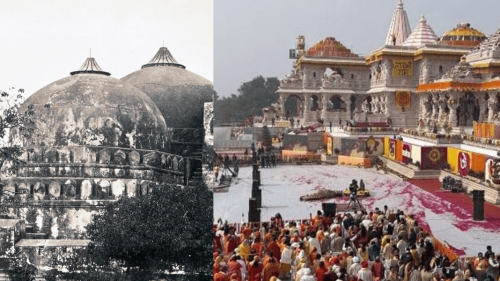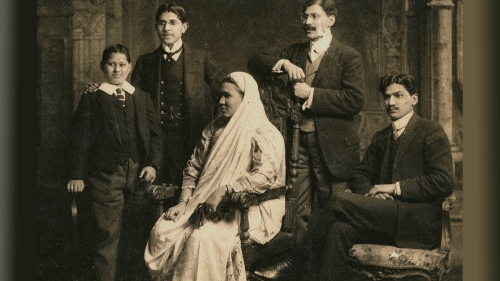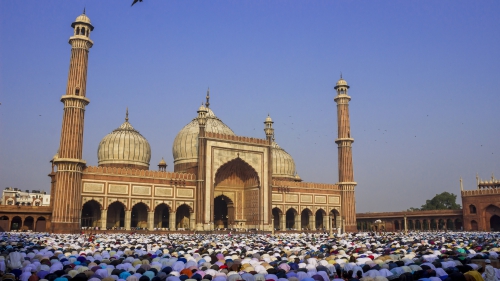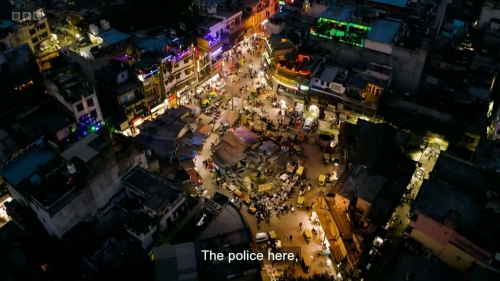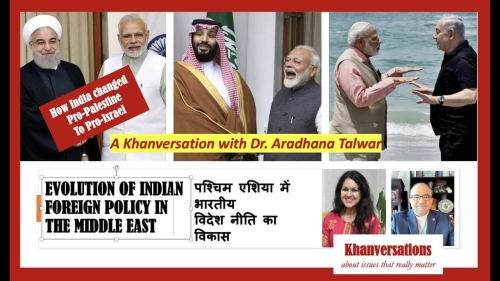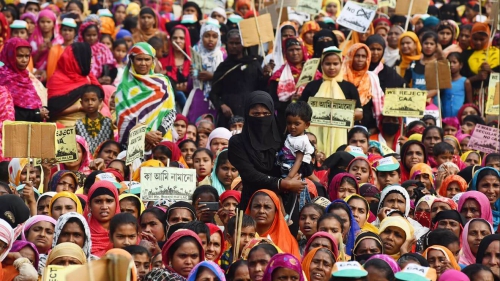Could India Become Another Bosnia?
The country has changed a lot since my last visit there in the summer of 1992. Unfortunately, most of it appears to be for the worse. The situation of the world's second largest Muslim minority, with estimates ranging from 120 million to 150 million, is deteriorating rapidly.
Consider the following. According to Indian government statistics, the national literacy average is 51% overall but among Muslims, less than 13% of the men and only 8% of women are literate, according to a study by the Gujarat Institute of Development Research (GIDR) in 1993.
When it comes to higher education, only 4% of Muslim males have completed secondary education, and only 2.3% of them could boast a college education. The comparative figures for Christians and Hindus are 8%.
Unfortunately, even this figure is misleading since a large percentage of Muslims with college education are graduates of Islamic and/or Arabic colleges, with little, training in contemporary subjects.
In fact, according to the Institute of Objective Studies in New Delhi, only 54 of the 5,853 students enrolled at the Madras campus of the Indira Gandhi National Open University were Muslims.
Even in terms of educational institution building, the community lags far behind with only 54 of the 3604 degree-granting colleges being managed by Muslims, according to an article published in the Indian weekly, Radiance.
In terms of politics. Muslim representation in Parliament fell from 9% in 1982 to 6% in 1991. The community has been used as a vote bank by the various parties from time to time. Now some members of the community are trying to float a Muslim party, which may achieve nothing more than splitting votes among an already weakened minority.
Economically, Indian Muslims suffer greatly. The GIDR study found that more than 47 percent of Hindus are employed in regular wage occupations in organized sectors, while only 29 percent of Muslims are employed. Their representations in most fields -- including law enforcement, government service and even military service -- are well below what their numbers should dictate.
In the case of loans, only 3.7% of Muslims receive government loans for commercial activities while only 2% of them receive loans given for social purposes.
Sadly, even as the Muslim plight deteriorates, the Islamic spirit and identity is not increasing among the adults or even the youth as one would expect. In fact, a cousin of mine active with the Students' Islamic Organization (SIO) said he believes that India will become another Bosnia. He said that nothing short of this will awaken the slumbering Muslim leadership and masses in India.
I found during my visit that society is clearly much more polarized than it was in the summer of 1992. It is possible to feel the tension even in areas where all religious groups traditionally coexisted peacefully. The divide is now not only between Hindus and Muslims, but also Hindus and Christians and Hindus and Sikhs.
Needless to say, in far too many regions of the country, Muslims and Christians are already living under seige. For instance, on my way back to Canada through Mumbai (formerly Bombay), the commercial hub of India, we were warned not to leave our hotel room or venture out into predominately Hindu areas. Even my wife's cousin who lives in Bombay could not leave her house to come see us at our hotel as she would have to travel through Hindutva strongholds.
The city was on heightened alert as the Hindutva movement had threatened to turn the city upside down if the leader of the Shiv Sena, Bal Thackeray, was arrested as threatened by Bombay police. The Maharashrate state authorities, led by the Congress party, was acting on the basis of the Srikrishna Commission report.
The report released in June found Thackeray responsible for inciting attacks on Muslims which resulted in the butchering of between 800 and 1700 Muslims in Bombay during 1992-93, in the wake of the Babri Masjid destruction.
The momentum gained by the Hindutva movement with the destruction of the Babri Masjid on December 2, 1992 has emboldened the movement to reach greater heights. But the suffering of Muslims did not start with the destruction of the mosque built in 1528. They have been suffering since 1947. Since then, the community has had to witness the destruction, occupation or conversion of more than 7,000 mosques. To date, they have also been victims of more than 16,000 "communal riots", a euphemism for anti-Muslim pogroms since partition.
What is clearly noticeable today in India is the open distrust and hatred of Muslims emanating from all levels, not just the illiterate and uneducated massess.
Indeed, a non-Muslim Indian columnist for rediff.com, wrote about of his experience with the board of his cooperative housing complex. Dilip D'Souza writes of his disgust upon learning that the board had passed the following resolution: "Any member wishing to sell his flat will not sell to a Muslim." He rhetorically asks what is worse, the wording of this resolution or the fact that nobody had the courage to challenge it. This kind of illegal practice is now reportedly a common practice in many areas. And when a Bombay newspaper carried stories about this trend of turning away Muslims, it was bombared with letters denouncing the stories. The common theme shared by letter writers was that there was nothing wrong with the policy and that it was their prerogative not to sell to Muslims.
The hostility is even evident in some of the national so-called "secular" press. Though of course it is more subtle. The general feeling is that the only good Muslim is one who has no regard for his religion or identity. This to me sounds very much like the situation for Muslims in Bosnia.
(Faisal Kutty is a Toronto-based lawyer and writer. He is also a columnist for the Washington Report on Middle East Affairs. This article was written shortly after his return from a visit to India. This column is one in a series he plans to write on observations and research during his trip.)







